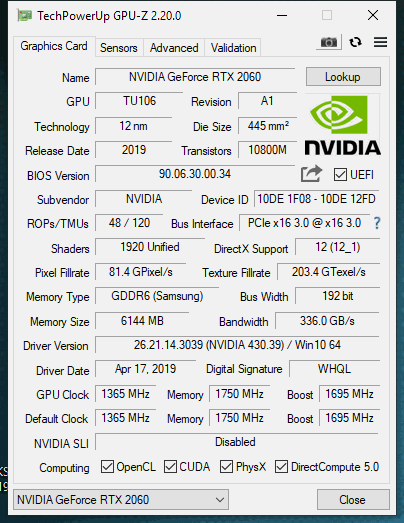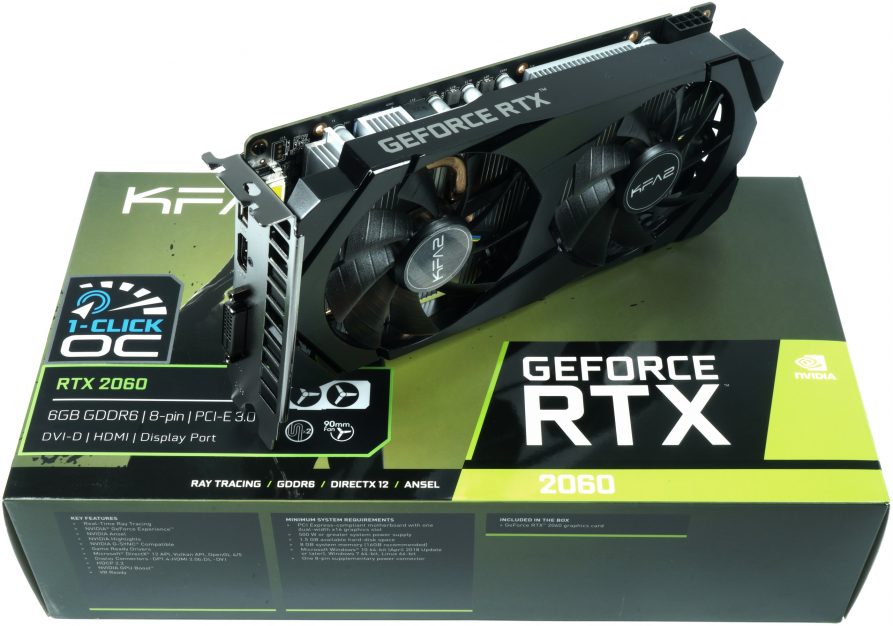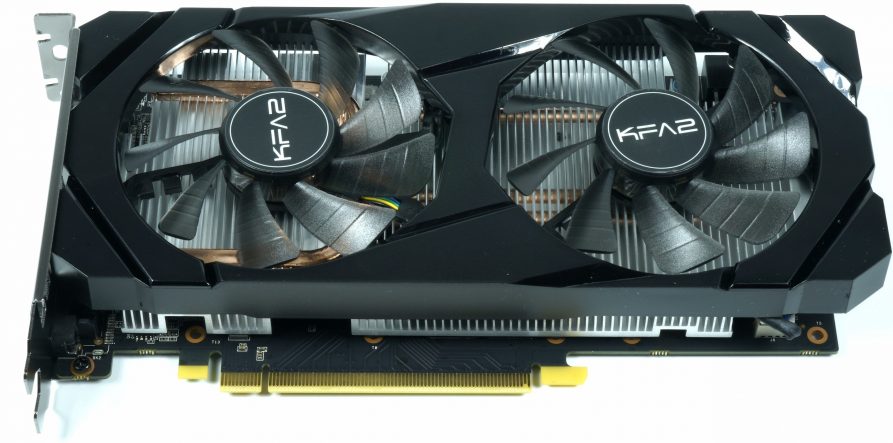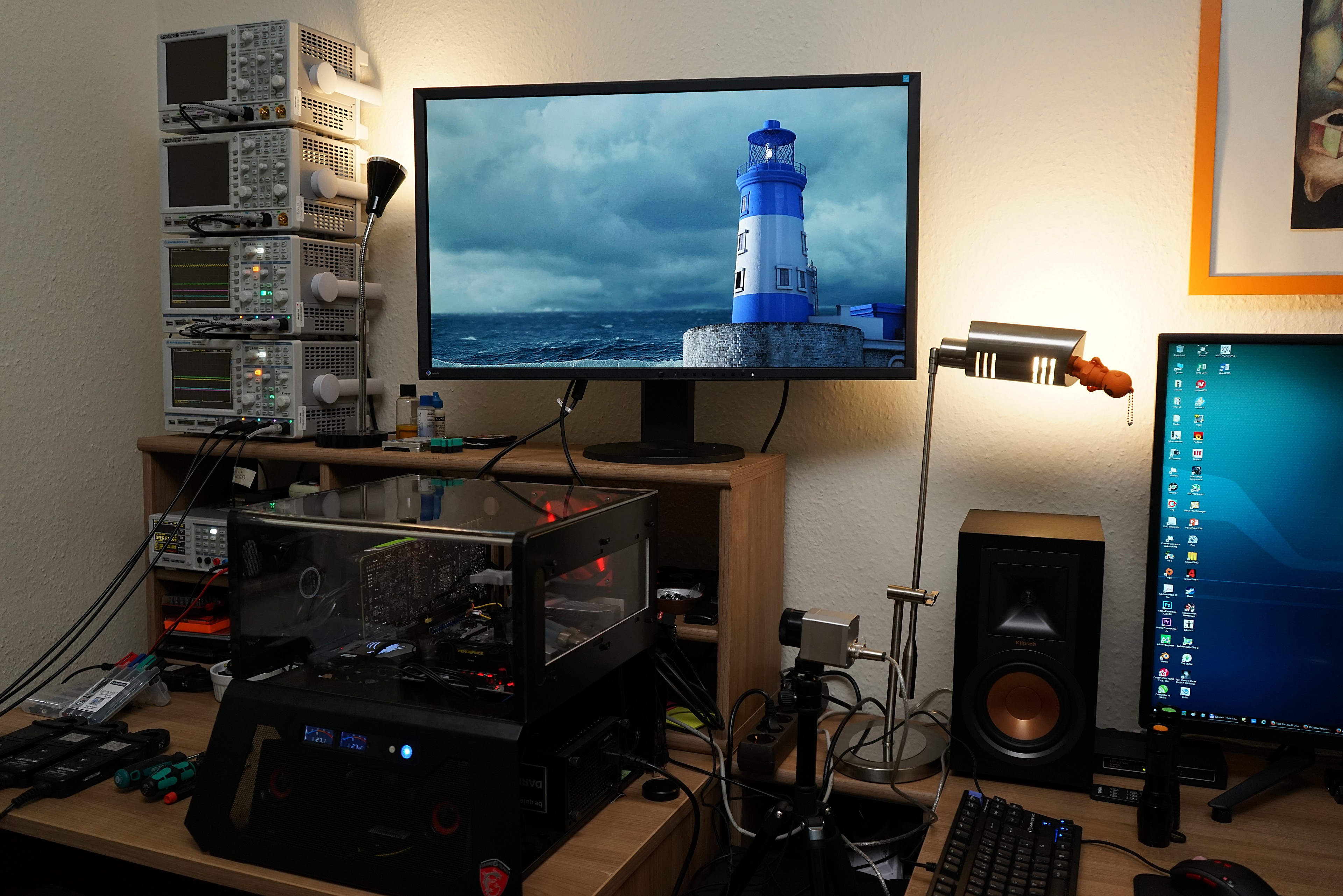The GeForce RTX 2060 1-Click OC from KFA2 deliberately places itself at the lower end of all GeForce RTX 2060, which is also expressed in the purchase price. But in addition to the necessary savings, which the manufacturer has to make for this for cost reasons, there are still various restrictions by the chip manufacturer, which have to be reconciled in the end. You can read what it’s about and what came out of it in this test.
The so-called Cost Down, as long as some of it also arrives at the customer and it is used wisely, can certainly lead to products that can still enable you to enter this service class even with less financial resources. So far, so good. But you have to weigh up carefully whether it might not be better to get in a little more expensive from the start, if the cuts are too high. It is and remains a balancing act that the manufacturer has to balance exactly.
I really didn’t make it easy with this card, because the approaches for a low-cost and usable product have been quite successful. But it could have been much more if it weren’t for the hard-hitting rulebook in the form of Nvidia’s Base Design Kit, which prevents things in a form that you can only shake your head at times. The urge to stop the cannibalization of more expensive models by cleverly planning cheaper maps is almost manic. But I’ll come back to the Tear Down.
The fact that the card comes to the customer with a non-A chip is still easy to hurt if at least the rest is right. The board used here and also the cooler also show that the manufacturer has given some thought and has made an effort to ensure that the pressure to save is not too painful for the end customer. But if profit margins have slipped into low single-digit ranges across the manufacturers’ entire portfolio since Turing, then one understands why street prices are falling so slowly.
Unboxing and first impressions
The card, which weighs only 583 grams, is 22.5 cm long, measures 10.5 cm from the top of the slot panel to the top edge and is 3.5 cm thick. For cost reasons, a backplate is dispensed with as well as any LED illuminations. The cover is made of dark grey plastic and carries the two 85 mm fan modules with nine, very steep rotor blades each, which provide neat throughput. This gives you a good dual-slot design without overhangs.
The cooling fins of the massive aluminium continuous casting cooler are arranged vertically and a total of two 4 mm copper heatpipes have been used quite cleverly at the top and bottom. But I will come to these details in a matter of time. Yes, it is the most cost-effective solution when working with continuous casting elements, but the solution is not quite so stupid, given the relatively low power consumption. After all, it is enough.
The connection options are slightly below the average, because there are only three connections in total, i.e. one of each. And so a DVI-meet. Connection, an HDMI 2.0 and a DisplayPort jack and form a minimalist trio, which the fourth player has unfortunately lost.
The screenshot of GPU-Z gives us a first impression:

Technical data and comparison maps
At the end of this introduction, the maps of the new generation and those of the old generation in direct tabular comparison:
| GeForce GTX 1060 FE | GeForce RTX 2060 FE | KFA2 RTX 2060 1-Click-OC |
GeForce RTX 2070 FE |
GeForce GTX 1070 FE |
|
| Architecture (GPU) |
Pascal (GP106) | Turing (TU106) | Turing (TU106) | Turing (TU106) | Pascal (GP104) |
| CUDA Cores |
1280 | 1920 | 1920 | 2304 | 1920 |
| Tensor Cores |
N/A | 240 | 240 | 288 | N/A |
| RT Cores |
N/A | 30 | 30 | 36 | N/A |
| Texture Units |
80 | 120 | 120 | 144 | 120 |
| Base Clock Rate |
1506 MHz | 1365 MHz | 1365 MHz | 1410 MHz | 1506 MHz |
| GPU Boost Rate |
1708 MHz | 1680 MHz | 1695 MHz | 1710 MHz | 1683 MHz |
| Storage expansion |
6GB GDDR5 | 6GB GDDR6 | 6GB GDDR6 | 8GB GDDR6 | 8GB GDDR5 |
| Storage bus |
192-bit | 192-bit | 192-bit | 256-bit | 256-bit |
| Bandwidth |
192 GB/s | 336 GB/s | 336 GB/s | 448 GB/s | 256 GB/s |
| Rops |
48 | 48 | 48 | 64 | 64 |
| L2 Cache |
1.5 MB | 3 MB | 3 MB | 4MB | 2MB |
| Tdp |
120 W | 160 W | 160 W | 185W | 150w |
| Transistors |
4.4 billion | 10.8 billion | 10.8 billion | 10.8 billion | 7.2 billion |
| The size |
200 mm2 | 445 mm2 | 445 mm2 | 445 mm2 | 314 mm2 |
| Sli |
No | No | No | No | Yes (MIO) |
Test system and measurement methods
We have already described the new test system and the methodology in detail in the basic article “How We Test Graphics Cards, as of February 2017″ and therefore refer to this detailed basis for simplicity. Description. So if you want to read everything again, you are welcome to do so. However, we have again improved CPU and cooling to largely exclude possible CPU bottlenecks for this fast card.
If you are interested, the summary in table form quickly provides a brief overview:
| Test systems and measuring rooms | |
|---|---|
| Hardware: |
Intel Core i7-8700K x 5 GHz MSI Z370 Gaming Pro Carbon AC 16GB KFA2 DDR4 4000 Hall of Fame 1x 1 TByte Toshiba OCZ RD400 (M.2, System SSD) 2x 960 GByte Toshiba OCZ TR150 (Storage, Images) Be Quiet Dark Power Pro 11, 850-watt power supply |
| Cooling: |
Alphacool Ice Block XPX 5x Be Quiet! Silent Wings 3 PWM (Closed Case Simulation) Thermal Grizzly Kryonaut (for cooler change) |
| Housing: |
Lian Li PC-T70 with expansion kit and modifications Modes: Open Benchtable, Closed Case |
| Monitor: | Eizo EV3237-BK |
| Power consumption: |
non-contact DC measurement on the PCIe slot (Riser-Card) non-contact DC measurement on the external PCIe power supply Direct voltage measurement on the respective feeders and on the power supply 2x Rohde & Schwarz HMO 3054, 500 MHz multi-channel oscillograph with memory function 4x Rohde & Schwarz HZO50, current togor adapter (1 mA to 30 A, 100 KHz, DC) 4x Rohde & Schwarz HZ355, touch divider (10:1, 500 MHz) 1x Rohde & Schwarz HMC 8012, digital multimeter with storage function |
| Thermography: |
Optris PI640, infrared camera PI Connect evaluation software with profiles |
| Acoustics: |
NTI Audio M2211 (with calibration file) Steinberg UR12 (with phantom power for the microphones) Creative X7, Smaart v.7 own low-reflection measuring room, 3.5 x 1.8 x 2.2 m (LxTxH) Axial measurements, perpendicular to the center of the sound source(s), measuring distance 50 cm Noise in dBA (Slow) as RTA measurement Frequency spectrum as a graph |
| Operating system | Windows 10 Pro (1803, all updates) |










































Kommentieren